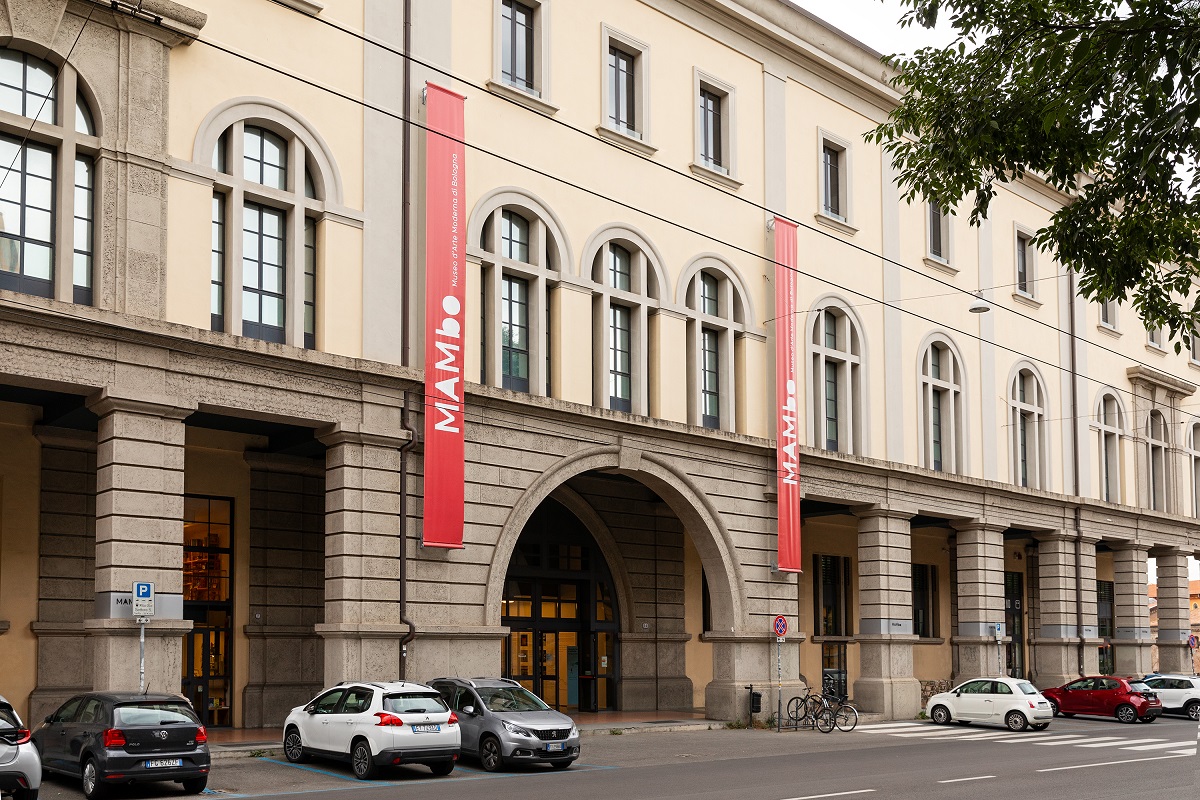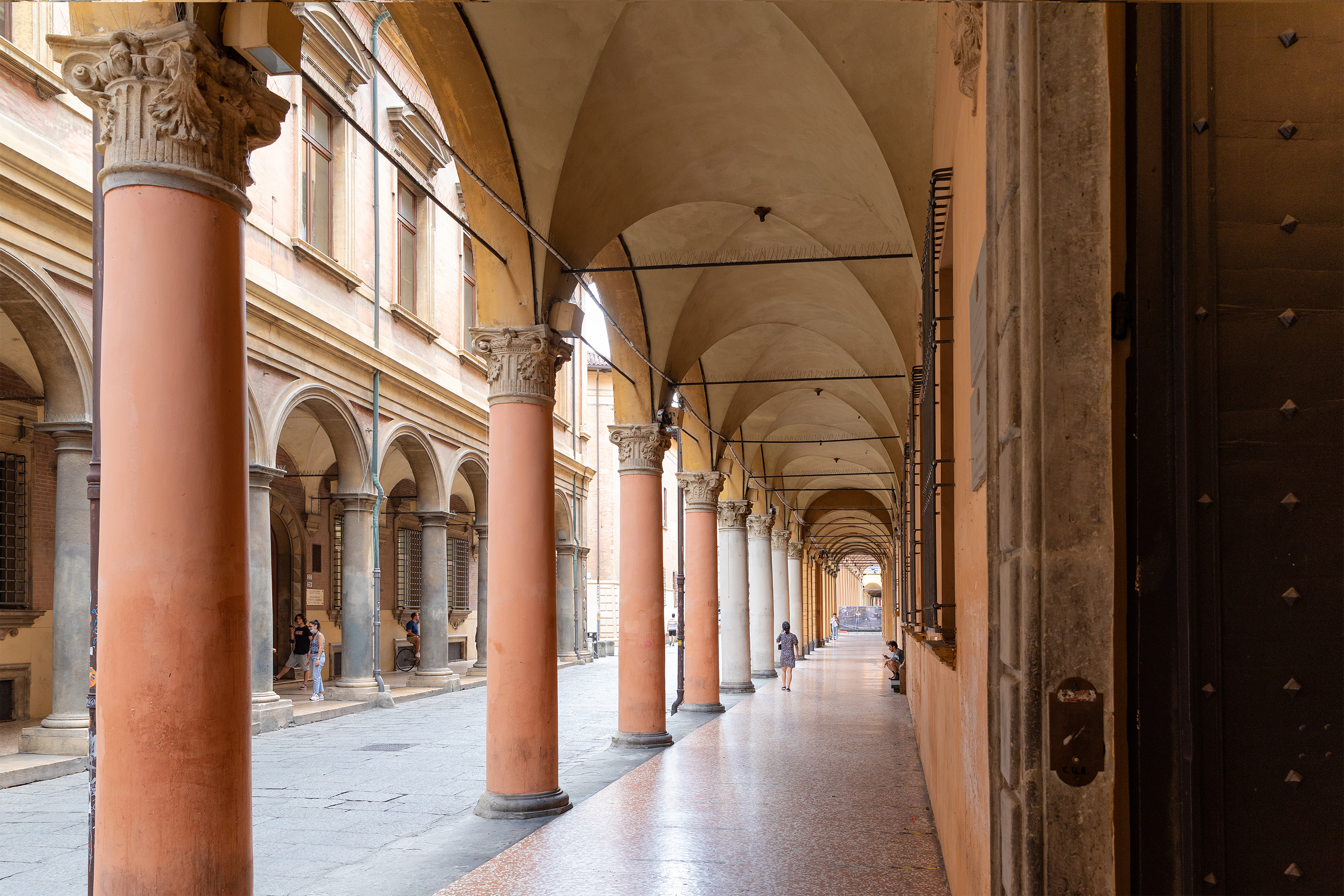The UNESCO Porticoes between Architecture and History
Updated on 02 December 2021 From Bologna Welcome
Bologna is a city of a thousand faces and porticos, nominated as a UNESCO World Heritage Site on 28 July 2021. Behind these incredible urban constructions, there are very well-defined and unique architectural features.
The 12 porticoes that make up the UNESCO serial site the Porticoes of Bologna were selected for their exemplarity in summarizing the history of a millenary architecture that has taken root in this city like in no other urban reality. From the late Middle Ages onwards, for legal, economic and cultural reasons, the Portico spread in fact in a capillary way along the route of the new expanding streets, making the city landscape unmistakable in the following centuries and providing it with an extraordinary variety of architectural solutions.

Porticoes in via Farini ©Marco Augusto Ghilardi
I would suggest following a chronological order in your visit, starting from the architraved porticoes of the modest artisan houses, developed by monastic initiative, along Via Santa Caterina, and then moving on to the different types of late medieval Porticoes, with masonry arches supported by low walls, which separated the vehicular traffic from the pedestrian one, perfectly exemplified by the noble palaces of Piazza Santo Stefano, with the characteristic brick columns of octagonal shape, which will soon give way to the more classical stone columns of circular section.

Porticoes of via Santa Caterina
The proto-Renaissance and the fully Renaissance Porticoes, between the age of Bentivoglio and the end of the 16th century, are excellently represented by the components of via Galliera and Baraccano, which document the variety of use of Portico solutions of antiquarian inspiration, while the component of Piazza Maggiore and Archiginnasio coincides with the most central area of the city and the grandiose monumental arcades of the main civic institutions that develop along the axis of the Pavaglione and under the imposing arches of the Palazzo del Podestà.

Porticoes of via Galliera ©Marco Augusto Ghilardi
Moving then slightly further south, we can mingle with the passers-by crowding the commercial Porticoes of the 19th century developed around Piazza Cavour and Via Farini, designed in a historicist key reinterpreting a glorious past. The only example of a twentieth-century portico in the central area included in the list is the portico of the Forno del Pane, a building with a profound social value built near the ancient Navile port, today the seat of the city's Museum of Modern Art (MAMbo).

Porticoes of MAMbo
Walking along the rectilinear street perspectives of the easternmost area of the oldtown, besides the academic Portico of the university citadel along via Zamboni, we can appreciate the process of adaptation of the Porticoes to the large religious buildings. The triumphal axis of Strada Maggiore does not only sew together an endless sequence of residential buildings, but it also hosts the extraordinary late gothic Portico of the church of Santa Maria dei Servi, unique for its width and elegance. Continuing eastwards, the urban porticoed ribbon of the ancient Via Emilia is also projected outside the ancient circle of walls, with the first "covered street" that reaches the church of Santa Maria degli Alemanni.

Porticoes of via Zamboni
Walking along the portico of San Luca, recognized since the 18th century as "truly unique in the world", we retrace a baroque processional and devotional route projected out of the walled city to reach the famous Marian Sanctuary under cover and architecturally connected to the city urban layout. Intimately connected to every citizen, this huge columnade still continues to amaze anyone who faces the steep upward path ending inside the elliptical basilica.

Portico of San Luca
Along the stretch of the plain, this Portico is then intercepted by another covered gallery that corresponds to the 19th century portico of the Certosa, designed in the Napoleonic era as a highly original porticoed burial way. In order to finally reach the only component of modernist Portico, we have to move towards the district of popular economic housing of Barca, next to the Reno river, with the singular portico building known as "The train", which, with its almost 600 meters, reinterprets the popular matrix of the medieval Portico on a larger scale by using techniques and materials of the twentieth century.

Train Portico in the Barca district @Lorenzo Burlando

This itinerary for Promenade Bologna is suggested by...
Francesco Ceccarelli, professor of Architectural History at the University of Bologna. He has contributed to the Porticoes' inscription in the Unesco World Heritage List with his research on the Porticoes of Bologna between the Middle Ages and the Modern Age.

